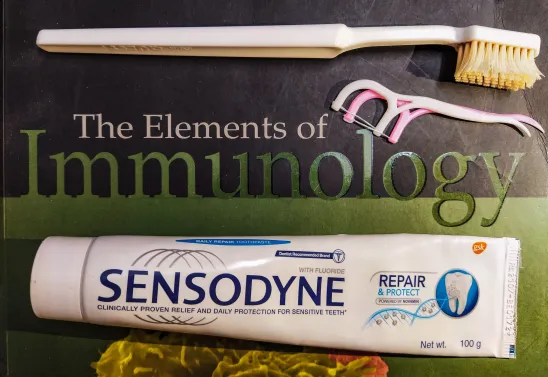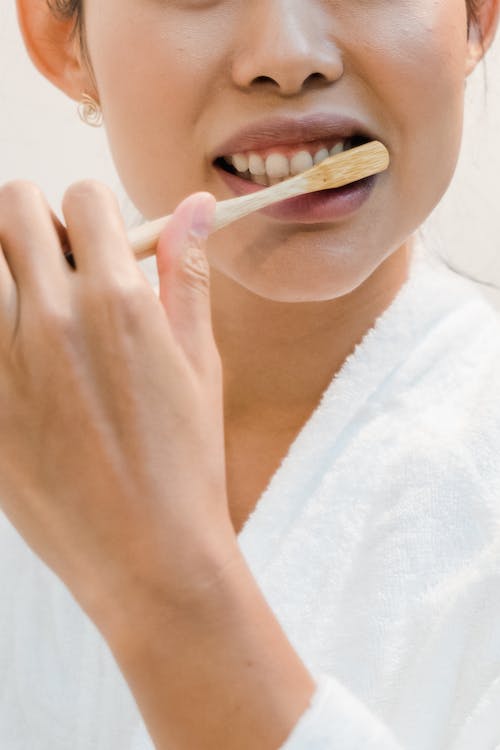Summary
Focus on toothbrushes
Focus on toothpaste
Step 1: Toothpaste application
Step 2: Brushing Technique
Step 3: Order of brushing
Step 4: Brushing time
Step 5: Rinsing
Step 6: Add-ons for even better brushing
Step 7: Changing your toothbrush
Oral hygiene is essential to avoid a certain number of ENT pathologies and to keep your teeth in good condition as long as possible. The easiest way to do this is to brush your teeth effectively daily.
Focus on toothbrushes
Before we even get to the actual teeth brushing, looking at the equipment needed to brush the teeth effectively is useful.
There are two main options for the central element: the toothbrush.
It can indeed be:
a manual toothbrush;
an electric toothbrush.
Manual toothbrushes
Manual toothbrushes have the major advantage of being cheap. They can be found in supermarkets, pharmacies, or on the internet.
Their cost does not exceed $10 and is often sold by lot.
In all cases, it is preferable to buy a toothbrush with the following:
medium bristles: if you don’t have any particular dental problems;
soft bristles: in the vast majority of cases and in case of problems or sensitivity.
Toothbrushes with hard bristles can be aggressive for dental enamel and gums.
Toothbrushes with a small head are also preferable.
Note: some toothbrushes have a somewhat crenelated area on the back of the brush section (where the bristles are) designed to brush the tongue.
Electric toothbrushes
There are a wide variety of electric toothbrushes.
They are much more expensive than manual toothbrushes and are of good quality. It is possible to get cheap electric toothbrushes, but they are often mediocre.
The main criteria to take into account to make the right choice:
- The power supply can be rechargeable (on a base) and more ecological or battery-operated (often disposable).
- The shape of the brushing part: prefer round heads, the most common;
The technology can be :
- rotating (all of them are);
- oscillating and vibrating (to facilitate the cleaning of hard-to-reach areas)
- sonic (ideal for subgingival plaque);
- mixed (the most expensive).
Good to know: for those who can afford it, it is preferable to choose mixed electric toothbrushes with a sonic function.
It is necessary to take into account the following:
the solidity of the product;
price of spare brushes;
power supply system (batteries).
noise: some toothbrushes make a lot of noise, which can be a criterion to avoid.
Good to know: the playful aspect of electric toothbrushes can seduce the youngest and help to give them good habits. In this case, don’t forget to buy them a small toothbrush adapted to their morphology. Moreover, these electric brushes can be interesting for people with motor difficulties.
Focus on toothpaste

All kinds of toothpaste exist. If all of them allow for avoiding cavities, according to your dental problems and your needs, you can choose the kinds of toothpaste dedicated to the fight against:
- gingivitis (some tubes of toothpaste contain ratanhia, which is very effective);
- dental plaque and tartar;
- tooth sensitivity, etc.
Some white kinds of toothpaste also exist. For example, Sensodyne Repair and Protect. Ask your dentist for advice if you are unsure or hesitant.
1. Application of toothpaste
Brushing your teeth should be a regular activity done after each meal. If only one brushing is done, it should preferably be done in the evening.
Toothpaste
To brush your teeth effectively :
- Start by running the toothbrush under a stream of water to wet it.
- Apply a layer of toothpaste on the bristles.
Sodium bicarbonate
Baking soda can be used twice a week to :
freshen breath ;
whiten teeth.
To do this, simply put a small amount of baking soda on your toothpaste and brush your teeth normally.
2. Brushing technique
To brush your teeth effectively, maintain a 45° angle between the brush and the gum.
The movement must be circular and made from the gum towards the end of the tooth.
With a manual toothbrush
With a manual toothbrush, make short and gentle movements. Well-controlled and meticulous on premolars, molars (more difficult to reach), and teeth that have had dental work done.
With an electric toothbrush
Depending on the model, make a slight rotating or simple movement from the gum toward the tip of the tooth.
3. Order of tooth brushing
The aim is to clean each side of the teeth.
Brushing the outer surfaces
Start by brushing the upper teeth on their visible side in the following order:
incisors ;
canines ;
premolars;
molars.
Do the same with the lower teeth, from the center to the sides.
Brushing the inner surfaces
Brush the inner side of the teeth (the part that is not visible, facing the mouth) in the same order as for the outer side, upper teeth first, then lower teeth.
Upper brushing
Brush the chewing surface, i.e., the upper surface of the premolars and molars.
Brush back and forth from the deepest teeth to the middle teeth.
Brushing the tongue
Finish by brushing your tongue.
Some toothbrushes have a special surface to brush the tongue and remove dead cells.
4. Brushing time
To brush your teeth effectively, you should brush for at least 2 minutes. Ideally, it should last 3 minutes.
Some electric toothbrushes have a built-in timer. For the others, time the brushing time.
Remember to turn off the tap water during this time.
5. Rinsing
Once you’ve finished brushing, take a sip of water and gargle for a few seconds.
Spit it out and repeat the operation if necessary.
6. Supplements for even more effective brushing
You can also use dental floss to remove food debris stuck in small interdental spaces.
For larger interdental spaces, you can get a brush that will be more suitable.
Finally, mouthwash can also be a complement to dental hygiene but should not be used every day, and in any case, not for more than two consecutive weeks at the risk of disturbing the flora in your mouth. Use them as a rinse or gargle, pure or diluted with water (read the instructions carefully).
Note that you can use a natural green tea mouthwash (15 ml) containing 1% tannin. Green tea is as effective as a chlorhexidine-based mouthwash in fighting plaque and can be used by pregnant women and children without any problem.
It is also safe to use sesame oil or coconut oil as a daily mouthwash. This practice, which comes from traditional Indian medicine (Ayurveda), is very effective against dental plaque, gum inflammation, and cavities. Concretely, place a teaspoon of oil in the mouth in the morning and let it circulate throughout the oral cavity for 10 to 20 minutes. After this time, spit out the oil.
To enhance the therapeutic effect of this mouthwash, you can add two drops of essential oil of clove, bergamot, citrus, myrrh, oregano, rosemary, tea tree, etc.
Tip: To make the mouthwash more effective, do not rinse your mouth afterward, and avoid drinking for about 20 minutes.
In general, make sure you visit your dentist once a year to check your teeth.
7. Change your toothbrush
To keep brushing your teeth effectively, you should change your toothbrush about every two months or as soon as the bristles start to fan out.
For rechargeable electric toothbrushes, only the head needs to be changed.
Note: some manual toothbrushes can be disassembled so that only the head needs to be changed. This system is, therefore, more ecological.
Materials needed to brush your teeth effectively
Mouthwash
Sodium bicarbonate
Toothbrush
Electric toothbrush
Toothbrushes
Toothpaste
Dental floss
Glass of water


